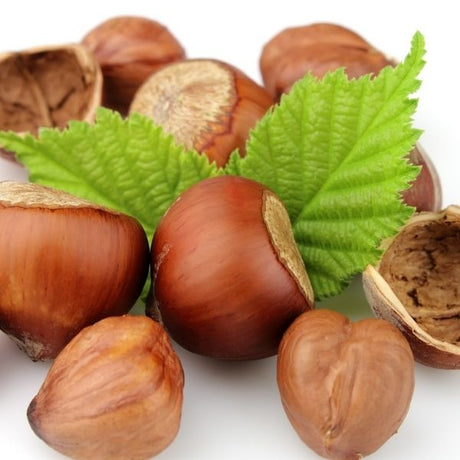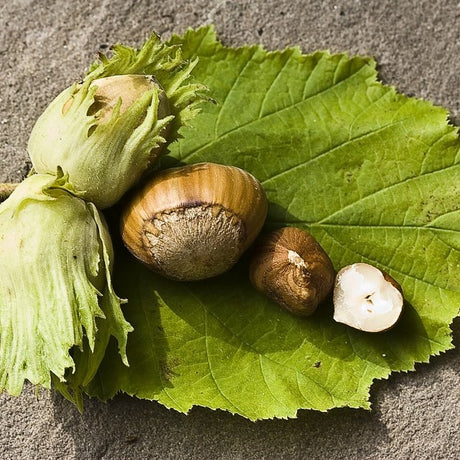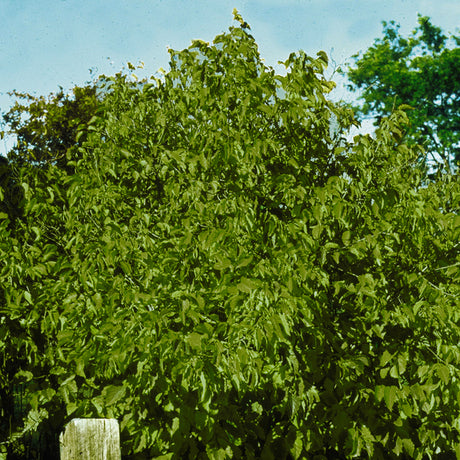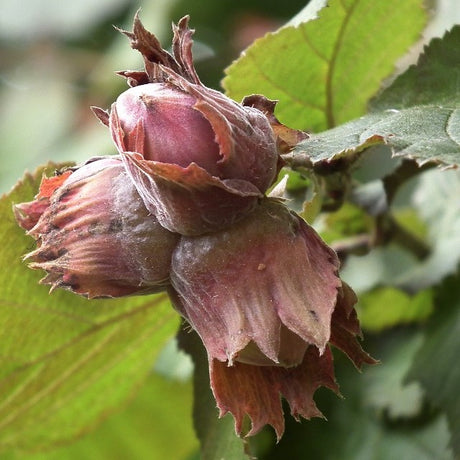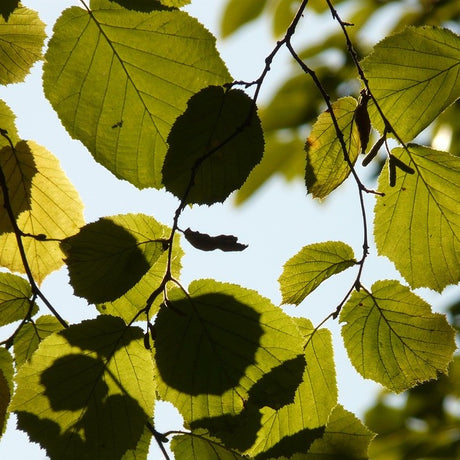Corylus americana
Sale price From $9397 Regular price $9905Unit price /Unavailable- Sold out
Corylus avellana 'Red Dragon'
Regular price $15571Unit price /Unavailable
Hazelnut Trees for Sale at Nature Hills Nursery

Hazelnut Trees (Corylus spp.) are part of the Birch family (Betulaceae) and are beloved for both their ornamental beauty and delicious, nutrient-packed nuts. These deciduous nut trees are native to the temperate regions of North America, Europe, and Central Asia, where they thrive in a variety of landscapes.
The versatile Hazelnut, also called the Filbert, produces a sweet, mild nut enjoyed by both people and wildlife. Hazelnuts typically begin producing by their fourth year and deliver larger harvests each season thereafter, ripening from late summer through early fall (August to October), depending on your region.
In addition to their edible bounty, Hazelnut branches have long been used for traditional crafts, basket-making, and fencing in many cultures.
Why Gardeners Love Hazelnut Trees
- Edible nuts loved by people and wildlife
- Dense canopy offers natural shade and screening
- Attractive spring catkins and fall foliage
- Adaptable, hardy, and low-maintenance once established
- Excellent for edible landscapes or wildlife habitat plantings
Four Seasons of Beauty and Function
Hazelnut Trees aren’t just productive, they’re attractive year-round!
- Spring: Long yellowish catkins and tiny red female flowers add charm.
- Summer: A lush canopy of dark green, serrated leaves offers cooling shade and creates a privacy screen for you and wildlife.
- Fall: Clusters of thick-shelled brown nuts appear among golden-yellow foliage, providing seasonal color and texture.
- Winter: Their corky bark adds visual appeal to the winter landscape.
These trees bring four-season interest and support backyard birds and pollinators throughout the year.
How To Grow Hazelnut Trees
 Planting Hazelnuts is simple, even for beginners. Here’s how to get started:
Planting Hazelnuts is simple, even for beginners. Here’s how to get started:
-
Sun: Choose a spot with at least six hours of direct sunlight per day for best nut production.
-
Soil: Prefers well-drained soil and benefits from a 3-4 inch deep mulch layer to retain moisture.
-
Water: Moderate water needs until established, then winter watering may help in dry regions.
-
Care: Once mature, they are cold-hardy and low-maintenance.
- Pollination: Most Hazelnuts need a partner tree for cross-pollination. Plant in pairs or rows for best yield.
For a natural and productive landscape, group Hazelnuts together, mix with Chickasaw Plum Trees for an edible, wildlife-friendly border.
Pruning Tips

Prune during late winter or early spring while dormant. Use renewal pruning every 3–5 years to remove older stems and encourage new, vigorous growth.
Need to check your growing zone? Visit our USDA Plant Zone Map to find the right fit for your region.
Shop Hazelnut Trees at Nature Hills
Bring home the beauty and bounty of Hazelnut Trees from Nature Hills Nursery. Each tree is shipped with care and backed by our Product Guarantee.
Family-owned and operated since 2001, Nature Hills Nursery proudly offers premium plants, reliable service, and compliance with all regulations through Plant Sentry™.
Shop the full Hazelnut Tree collection today at Nature Hills Nursery, and enjoy a thriving edible landscape for years to come!

FAQ's for Buying Hazelnut Trees Online
Do hazelnut trees need a pollinator to produce nuts?
Do hazelnut trees need a pollinator to produce nuts?
Yes, most hazelnut trees are not self-pollinating and require a compatible pollinator nearby for successful nut production. Planting at least two different varieties increases yield and ensures better cross-pollination for a more reliable harvest.
How long does it take a hazelnut tree to produce nuts?
How long does it take a hazelnut tree to produce nuts?
Hazelnut trees typically begin producing nuts in their 4th or 5th year. Yields increase steadily each year, with mature trees producing substantial crops of sweet, edible nuts from late summer through early fall.
Where is the best place to plant a hazelnut tree?
Where is the best place to plant a hazelnut tree?
Hazelnuts grow best in full sun (6+ hours of direct sunlight) and well-drained soil. They tolerate drought and various soil types once established, making them a great choice for open yards, hedgerows, privacy screens, or naturalized food forests.
Are hazelnut trees good for wildlife?
Are hazelnut trees good for wildlife?
Absolutely! Hazelnut trees provide food and shelter for birds, squirrels, and pollinators. The dense foliage offers cover, while the nutrient-rich nuts serve as a vital late-season food source for a wide range of wildlife.
How do you care for a mature hazelnut tree?
How do you care for a mature hazelnut tree?
Once established, hazelnut trees are low-maintenance. Prune in late winter to remove dead or older wood and encourage new growth. Renewal pruning every 3–5 years keeps the tree productive and healthy. Mulch annually to retain moisture and protect roots.

